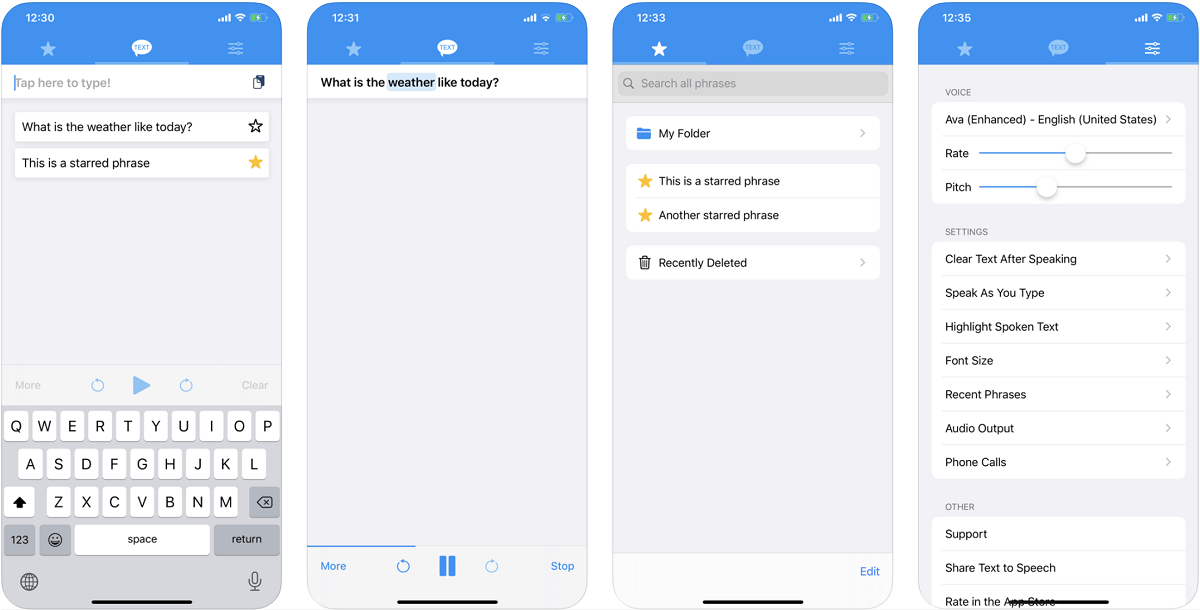
- #ANDROID SAMSUNG GALAXY S7 BEST TEXT TO VOICE READER HOW TO#
- #ANDROID SAMSUNG GALAXY S7 BEST TEXT TO VOICE READER ANDROID#
Swipe with two fingers on the Lock screen to unlock, or bring up the pattern grid.Here are the gestures you'll absolutely need to get around:
#ANDROID SAMSUNG GALAXY S7 BEST TEXT TO VOICE READER HOW TO#
Once you've first turned Voice Assistant on for the first time, we'd highly recommend you go through Voice Assistant Help, which will walk through how to control your phone with interactive guides. Navigating around the phone using Voice Assistant If this is all Greek to you, you don't have to worry about it.
#ANDROID SAMSUNG GALAXY S7 BEST TEXT TO VOICE READER ANDROID#
The time, battery life remaining, signal strength and missed events are turned on by default.ĭeveloper Options: Unless you're an Android developer, you probably won't have to worry about this section, but it includes log output level, TTS output and the option to enable node tree debugging. Status bar information: Select which information from indicators shown on the status bar will be read out when you triple tap the screen with two fingers. Manage customised labels: Supposedly, you can create custom labels by tapping an icon, button, or tab with Voice Assistant enabled then double tap and hold anywhere on the screen with three fingers. Quick menu: select which functions and setting will be shown in quick menu when you swipe left or right with three fingers. They work the same as tapping on the screen: tap once to select, then double-tap to press the button. This is turned off by default.īack and recent key feedback: toggle for feedback when pressing the Back and Recent keys. Large cursor: toggle to make the blue cursor box thicker when you tap to select something. Defaults to match media volume, but you have options to make it 75%, 50% or 25% of the media volume so that Voice Assistant isn't as intrusive. Sound feedback volume: sets the Voice Assistant volume compared to other phone media audio. Turned on by default.įocus on speech audio: turn this on to decrease the volume of other audio while Voice Assistant is reading out content on the screen.

Sound feedback: toggle on or off to have the phone vibrate every time you tap or complete a gesture. Vibration feedback: toggle on or off to have the phone vibrate every time you tap or complete a gesture. So if there's an action for you to complete on the screen, Voice Assistant will tell you what to do. Read out usage hints: reads out usage hints after a brief delay when swiping to focus on items. For example, if you were to hold down the letter 'G', Voice Assistant will say "gee. Read out phonetic alphabet: read out the corresponding word from the phonetic alphabet when typing and holding keys on the keyboard and when text on the screen is read out character by character. This one might take some testing to fine tune your personal preference. When you turn this feature on, you'll set how hard the device must be shaken - from very light to very hard. Shake to continue reading: shake to have Voice Assistant continue reading out the text on the screen when the device is shaken. The proximity sensor can also be used to mute voice feedback when you're on a call, too, so you're conversation is never interrupted by a notification.

Use proximity sensor: The proximity sensor is located just to the left of the earpiece, and is used to turn off the screen when you're on a call. You'll definitely want to make sure you're wearing headphones if you want to use this feature, unless you want your notifications broadcasted out as soon as they arrive. Speak while screen off: allow Voice Assistant to read out notifications while the screen is off. Defaults to always read out keyboard input, but you're able to select only for virtual keyboard or never read out keyboard input. Keyboard feedback: sets how Voice Assistant deals with keyboard input.

Pitch changes: Sets the voice feedback to vary in pitch while using the keyboard to enter text, so it doesn't sound incredibly robotic when typing. Speech rate: controls the rate at which Voice Assistant speaks.

Speech volume: control the Voice Assistant voice volume.


 0 kommentar(er)
0 kommentar(er)
